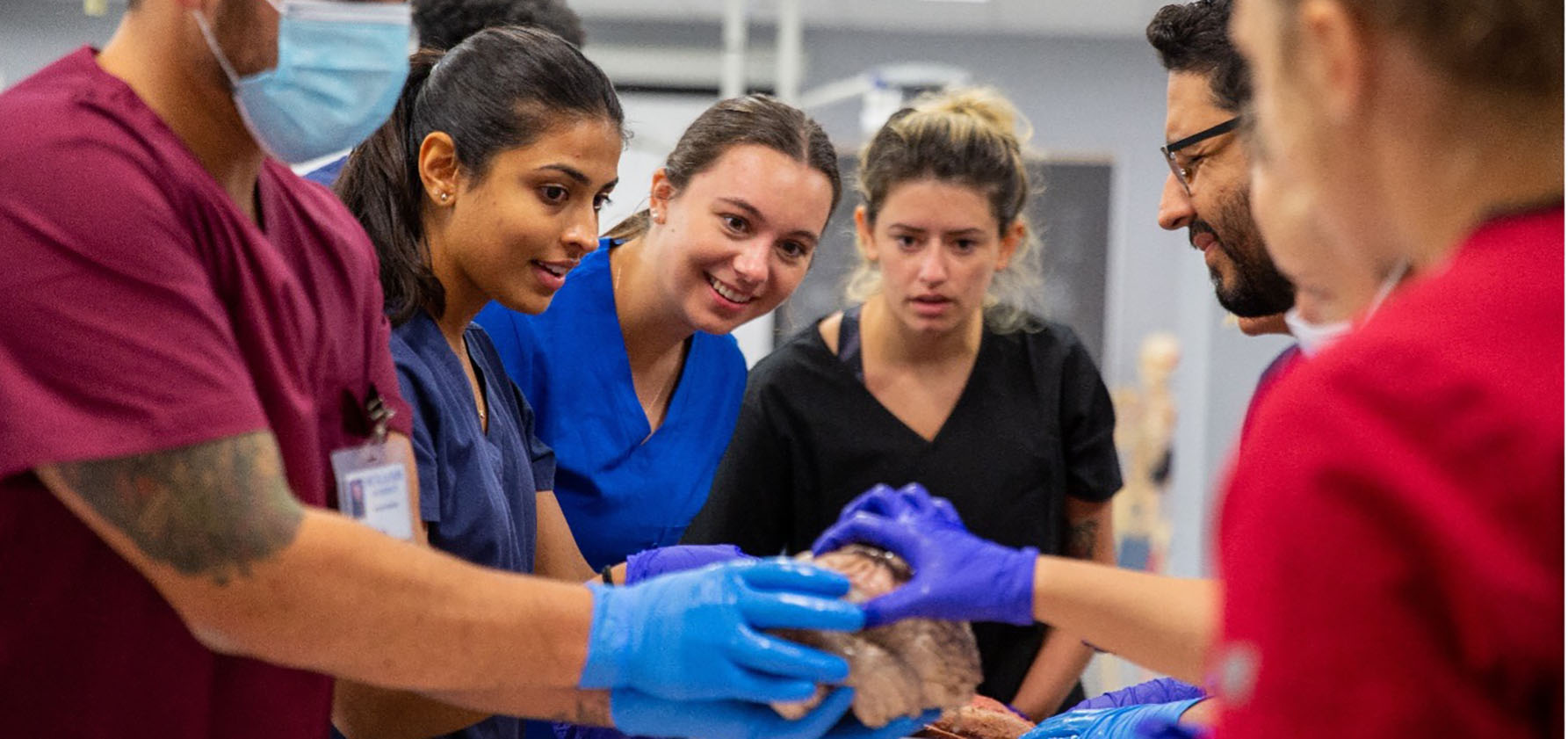
Above: Moravian physical therapy students examine a real human brain for the first time. Photo: Ashley Barnas, University of Delaware. Below: the Moravian DPT Class of 2024 with Krista Rompolski (pictured front, 2nd from left); Photo credit: Krista Rompolski and Ann Sywensky
For physical therapy students across the nation, having access to an anatomical donor system can be an excellent benefit in career preparation. Anatomical donors are often referred to as “silent teachers” because they chose to give the generous gift of having their bodies dedicated to scientific learning. This creates hands-on opportunities for students to explore the many differences in how muscles, organs, veins, and even tissues look and feel across donors. While virtual reproductions have improved accessibility to anatomy education and provide an array of opportunities to study human anatomy, directly examining a physical body creates further understanding into the unique structure of each human and is an unforgettable experience. Through a partnership with the University of Delaware (UD), Moravian University Doctor of Physical Therapy (DPT) students are receiving the best of both worlds.
On Saturday August 6, David Ebaugh, professor in the UD department of physical therapy and director of the human anatomy lab, hosted a full-day lab session for Moravian DPT students. Ebaugh was a former colleague and mentor of Krista Rompolski, an associate professor in the Moravian DPT program, School of Rehabilitation Sciences. This collaboration provided Moravian students with access to UD’s anatomical donors, allowing the students to build upon their prior classroom experience by studying human bodies dissected by the UD DPT students. To guide the experience, students were separated into groups of three and given a list of specific structures to find on donor bodies. To provide support, Ebaugh recruited two first-year UD DPT students and a teaching assistant to assist the Moravian students in finding the structures as needed and discussing their experience with dissection.
To further enhance the experience, Ebaugh and his team also placed out various specimens of different joints such as shoulders, elbows, hips, knees, and ankles, as well as real human brains and spinal cords. This provided an opportunity for students to visualize structures in components and hold them in their hands.
“Being in an actual lab with the donors lit a light bulb in anatomical understanding for students,” Ebaugh says. “Examining the nerve pathways and differences in muscle sizes helps their existing research come into full perspective.”

“We are a new program at Moravian University,” Rompolski says. “UD has the prestige of being a number-one college for physical therapy. Naturally, our
students found value in understanding the similarities in their careers and abilities with students they worked with at UD.” It boosted their confidence and sense of belonging to know that they had the same learning challenges in their anatomy course, which they were taking at the same time.
Rompolski emphasizes how Moravian’s virtual labs “eliminate the intense work of dissecting a physical body,” but there is value in students seeing and feeling the variety of tissues directly.
“So much of human anatomy, such as nerves innervating muscles, can seem so abstract until students actually touch and see the structures in their hands. Additionally, they were able to see how age and disease takes a toll on the body. This is a huge value-added experience for motivating students to learn beyond their grades.”
To help make this easier for students to appreciate, the lab was scheduled at the end of the summer after Moravian students had already learned anatomy through virtual programs. This way, they were able to attend and enjoy the learning experience without stress of specific exams while delivering that additional reinforcement to their knowledge.
Rompolski calls out the debate circulating in the anatomy education world about contrasts between learning anatomy through a virtual lab versus hands-on dissection: “Educators are nervous that the full experience will be lost as schools transition to virtual learning tools. Fortunately, there are many ways to be creative to get the best of both worlds.